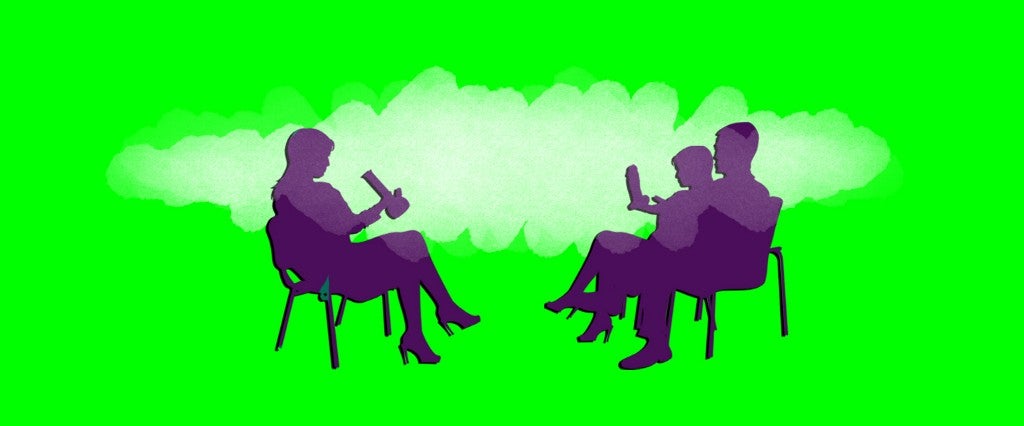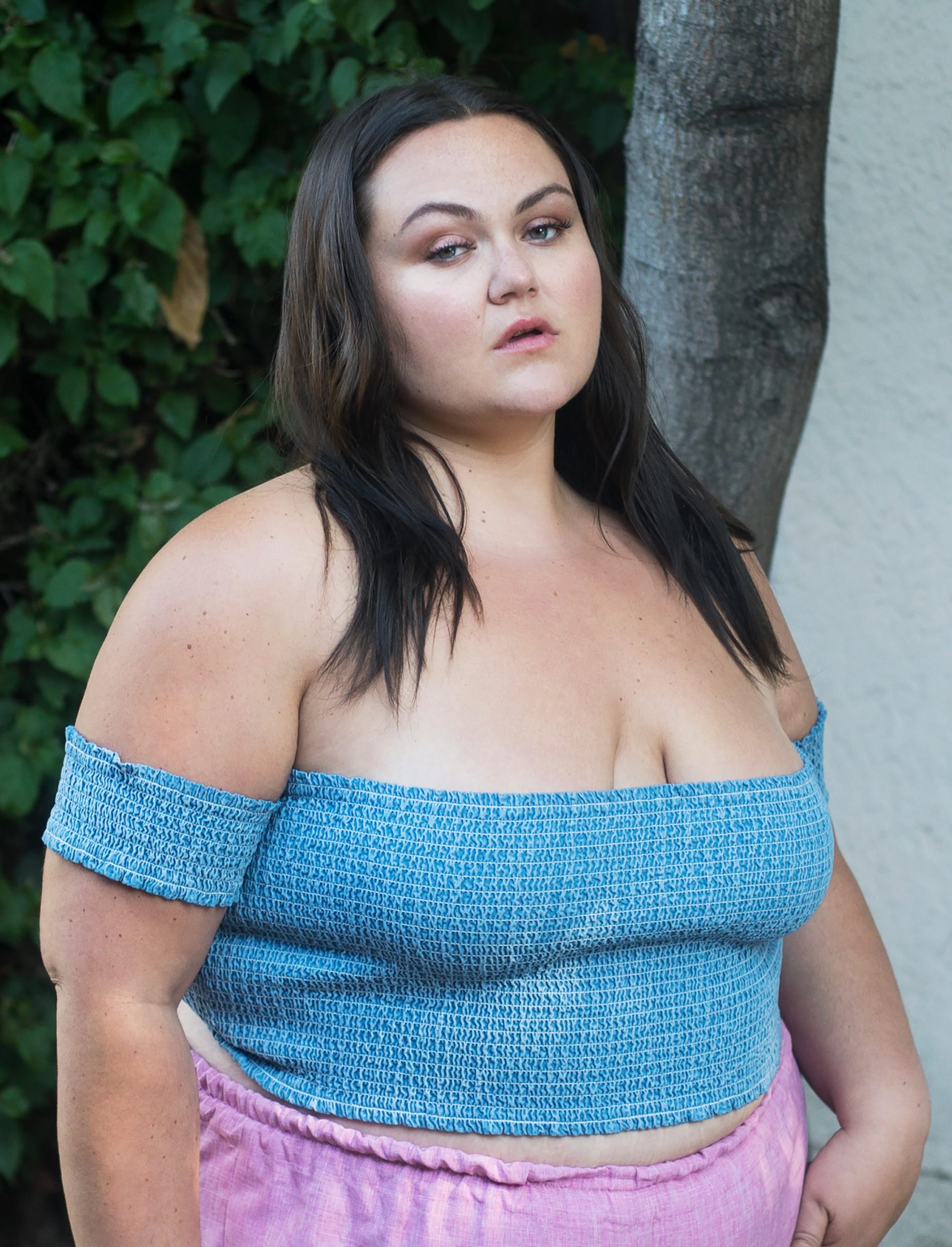Ashley Manta just had sex. At least, it’s very likely she did. The sex educator, coach and self-identified “cannasexual” frequently updates her Instagram about when and how she receives her sexual pleasure — be it from one of her partners or via a sponsored sex toy she also tags in the post. As the cannasexual title might imply, she also regularly identifies which cannabis products she’s using, usually before and after sex. (“Cannasexual” is intended to mean that you’re into mindfully combining sex and cannabis to optimize the way you feel.)
“Loved the Enlightened Hybrid from @Lowellfarms for tantric sex,” she wrote on a selfie in her Instagram story the other day. The photo shows beams of sunlight flooding her face as she smiles in that sleepy way that mostly says: “I just got stoned and fucked!”
Born and raised in Pennsylvania, Manta, 31, left Philadelphia in 2013. She moved to California sight basically unseen, excited to live somewhere with ample opportunity and legal weed, and now operates a multifaceted sexual health and pleasure business, facilitating how-to workshops, coaching couples and individual clients and working with wellness brands to promote sexual health. Oh, and hosting cannasexual sex parties, of course.
I recently spoke to Manta about how getting familiar with terpenes might save a stoner’s sex life from weed-related anxiety (and cottonmouth); why she considers herself a “handjob evangelist”; and the potentially therapeutic uses of weed among people with sexual PTSD.

How does sex education turn “cannasexual”?
When I started working in the sexual-education field, my emphasis was on sexual violence prevention and awareness. I’m a survivor of multiple sexual assaults. That first assault, when I was 13, really changed the way I viewed sexuality. When I got to college, I told my assault story for the first time at a Take Back the Night rally and felt so much better afterwards. That’s when I realized I wanted to do prevention work by starting these sorts of dialogues.
My purpose became to try to help people not assault people and help people not get assaulted. That led to me working at the district attorney’s office in Philadelphia as a victim advocate. I’d go to court every day with my victims and support them through the process, but I mostly worked with juvenile victims of adult offenders. All the child abuse was hard for me to deal with as a survivor myself. I burned out within a year and decided I needed to shift the focus of my career toward empowering consensual sex and pleasure.
Around that same time, I moved to California and experienced medical cannabis for the first time. I found it so valuable to be able to go to my dispensary and choose the right medication to manage my specific needs. I experience depression and panic attacks and have been diagnosed with PTSD. At the dispensary, I was able to get products that were good for those things. Shortly after that, in 2014, I found Foria, which is a THC-infused coconut oil sex spray. When I used it, it was the first time I had penetrative sex without pain in many years. It was a game-changer for me, a total paradigm shift. Then I realized there weren’t any sex educators talking about sex and cannabis.
Most of the time, in fact, sex educators are pretty hardline about not combining sex and stimulants of any kind, because you can’t properly consent when you’re intoxicated. That’s a totally valid point — and I certainly stand by it when it comes to alcohol. But after doing my own research, I found there to be room for nuance when it comes to sex and cannabis. For one, there are methods of consuming cannabis that don’t give you a psychoactive high, like CBD products. Also, it’s great to use cannabis with a trusted partner where consent is already established, so that you know you’re going to check in with each other throughout the experience to make sure everything still feels good and is consensual.
Why might someone who never smokes weed, or who only casually smokes weed, look into cannabis as a way to improve their sex life?
So on one hand, I’m not out to convert people. If people are happy not having cannabis in their sex lives, I’m not going to tell them they’re wrong for not wanting to consider including it. My approach is more like, if you already consume cannabis or you’re open to the idea of it, here are the best practices for mixing it with sex. The idea of being cannasexual isn’t limited to one specific sex act either, or even just partnered sex. I speak of it in terms of one’s overall relationship to their body, sexuality and self-care.
Do you recommend any specific strains of weed or modes of ingesting it in order to have the best possible sex?
I try not to recommend strains. The Blue Dream I have in L.A. or in San Diego can be very different than the Blue Dream that you get from your dispensary in your state. It can even change from dispensary to dispensary in the same city. So the way I go about recommending how to pair sex and cannabis is a little bit more nerdy. I ask questions like, “What am I feeling right now? Where am I at physically and emotionally?” Then I go, “What do I want to feel? What do I want this cannabis to do for me? What’s going to get me there?”
On that note, I find that edibles are only good for marathon sex. That’s why I prefer smoking, vaping, topicals and tinctures. In deciding upon an experience, I look at their cannabinoids and terpenes. THC can be good for creating a condition from which arousal begins, but if something is too high in THC, it can make you paranoid and anxious, which is the opposite of how you want to feel for sex. As for CBD, it helps you get out of your head and into your body, but it doesn’t get you high. So I look for a nice balanced strain.
I feel like for a lot of paranoid stoners, the idea of weed making sex better seems impossible.
Exactly. That’s why I like products with a 1:1 or a 5:2 CBD-to-THC ratio. That gives you the benefits without making you too stuck in your head or spacey. You’re still present. It’s also why I check out the terpenes whenever I look at lab results about a particular strain. For example, linalool is the terpene found in lavender that makes it smell like lavender. Strains high in linalool can be really soothing and relaxing. On the flip side, marijuana with a lot of myrcene in it will probably make you sleepy and might even cause anxiety.
If you don’t have access to all that, I tell people to create a strain bank for themselves. I keep a spreadsheet of the name of the strain, where I got it from, what it looks, what it smells like and any lab results I have for it. I consider stuff like, “How does this affect me when I’m by myself and trying to give myself pleasure?” That helps me recognize what’s going to be good with a partner.
But what about states where medical or recreational marijuana programs don’t exist? Is there still room for people to use street weed in ways that can be sexually beneficial?
Yes, absolutely. My heart goes out to people who live in prohibition states, because I lived in one for the first 27 years of my life. You can still create that body of data I described above using only whatever strains are available to you.
In the same way we’ve learned how to taste and identify wine — the way sommeliers can develop their palates and senses of visual acuity — people are now doing with weed too, even in prohibition states. My friend Andrew Mieure has made a whole career out of this, and while you’re not going to start at his level, it’s a knowledge bank you can build up and use to adjust the way you feel.
You mentioned leading body positivity workshops, which we usually associate with women working through their body-image issues. However, I’m curious about the experiences you’ve had with men in such spaces.
The need for body confidence definitely spans all genders. People who are socialized masculine and identify as men kind of get the raw end of the deal when it comes to having spaces to talk about body image. We assume that masculine-identifying people are just fine with their bodies, when in reality, we all have different expressions of the same insecurities. There’s definitely pressure on men to look and act certain ways and move through the world in a certain way. If a man dresses well, he’s considered a metrosexual. Maybe he’s gay; we’re not really sure. Men are afraid of being too hairy and afraid of not having enough hair, in which case they fear they’ll look like little boys. All of this stuff bleeds into their sexuality and relationships and influences how present we are.
You call yourself a “handjob evangelist.” I even read that you co-founded Hand Job Day, which is on July 21. Why the interest in a sex act that’s typically considered part of heavy petting in the earliest days of sexual experimentation?
There are so many blowjob classes out there, and they sell well, especially for bachelorette parties and stuff like that. But what I found is that blowjobs tend to be way better when someone really knows how to use their hands. That said, handjobs in and of themselves get completely disregarded when I know they can be amazing. I’ve spent a lot of time in the last few years honing and really leveling up my hand-job skills, which I love to share with folks through events and workshops.
You also speak about loving prostate stimulation, right? Is there a way you’d recommend men to explore this specific pleasure center?
We place so much societal baggage on receiving anal stimulations for people who are socialized masculine. But I’m sorry, orifices don’t have an orientation. I encourage men to get comfortable with stimulating their prostate by experiencing it alone. Whether it’s when you’re in the bath or shower, or just laying in bed before you go to sleep, start to explore and see what it feels like. Go slow, breathe deeply and use lube.

